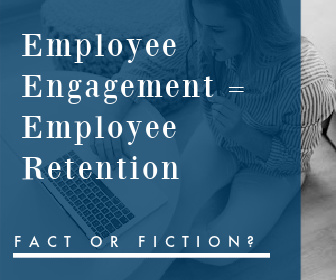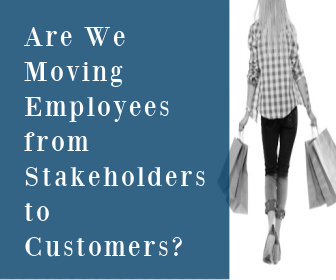Since so many employers are dealing with exiting employees and an accepted premise is that employee engagement leads to employee retention, I thought my next blog series should provide some tips and strategies for keeping your employees engaged, and thus, retained.
However, as I started looking through research articles, I noted that there were some articles that basically accused employee engagement as being, in my words, a lot of mumbo jumbo.
What?
I had to dig in. Here is what I learned.
Most employee engagement can be traced back to the work of William Khan in the 1990’s. At this point, I had to agree with the naysayers – anything that came out of the 90’s probably should be questioned:
- Lunchables as a healthy meal
- Neon windbreakers
- Overalls with one or both straps down
- Tickle Me Elmo
- Butterfly Clips
Just kidding, the 90’s were all that and a bag of chips.
Since I have not actually studied Khan, my first step was to investigate his theory. Here it is in a nutshell – or the fraction of a nutshell.
Khan provided the original employee engagement framework. He said that people’s personal engagement (bringing your “preferred self” to your tasks) requires 3 psychological conditions. He then defined those conditions for the workplace engagement.
Psychological Conditions for Personal Engagement
Feeling Safe
Meaningfulness
Having Energy and Resources
Khan Framework for Workplace Engagement
Physical Engagement
Cognitive Engagement
Emotional Engagement
Khan’s Definitions and Connections
Khan defined physical engagement as using your mind and body to get your work done. He equated people’s willingness to use their energy to do their work with people who felt confident (or felt safe) in their role.
Khan equated cognitive engagement with traits such as creativity and decisiveness. When people are able to be creative or self-empowered in their jobs, they are more likely to find them meaningful. The caveat is that to reach cognitive engagement, people need to understand the employer’s vision and strategies and how their role connects to both.
Khan cited the three ingredients for emotional engagement as positive relationships with individuals at work, positive group dynamics on their team, and a boss that they trusted.
The connection between emotional engagement and having the right energy and resources is that people are only going to keep using their energy and resources if they believe that effort will actually lead to something useful. If their efforts consistently lead to no change, or incomplete projects, or bad outcomes, they will expand less energy and fewer resources in the future.
And that is how the value of employee engagement was born.
I know I have not answered the question yet of whether or not employee engagement is valuable, so we will continue on this journey in the next blog. However, I can already see Khan’s logic, but more importantly, I believe I have lived Khan’s logic.




